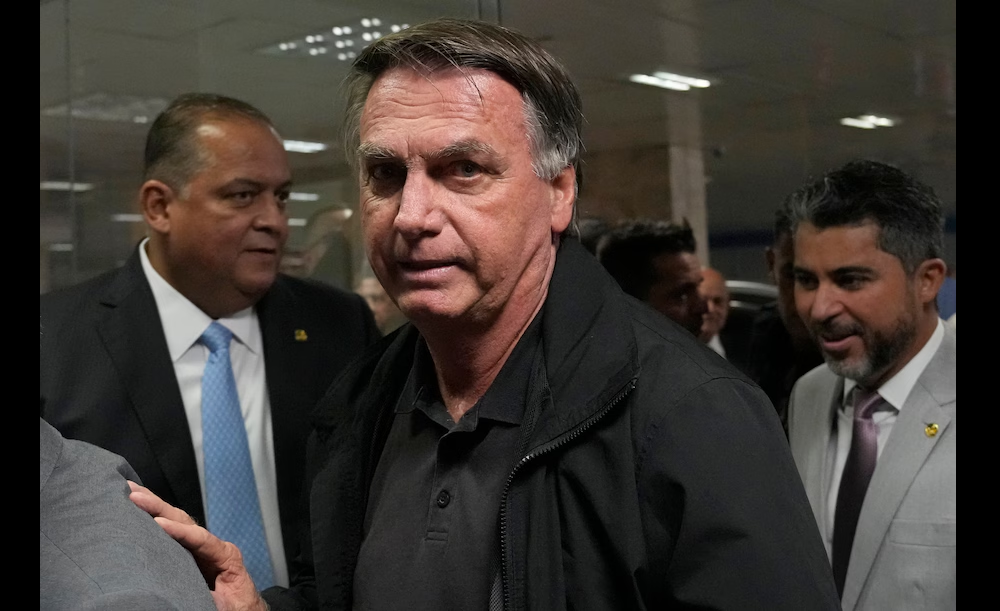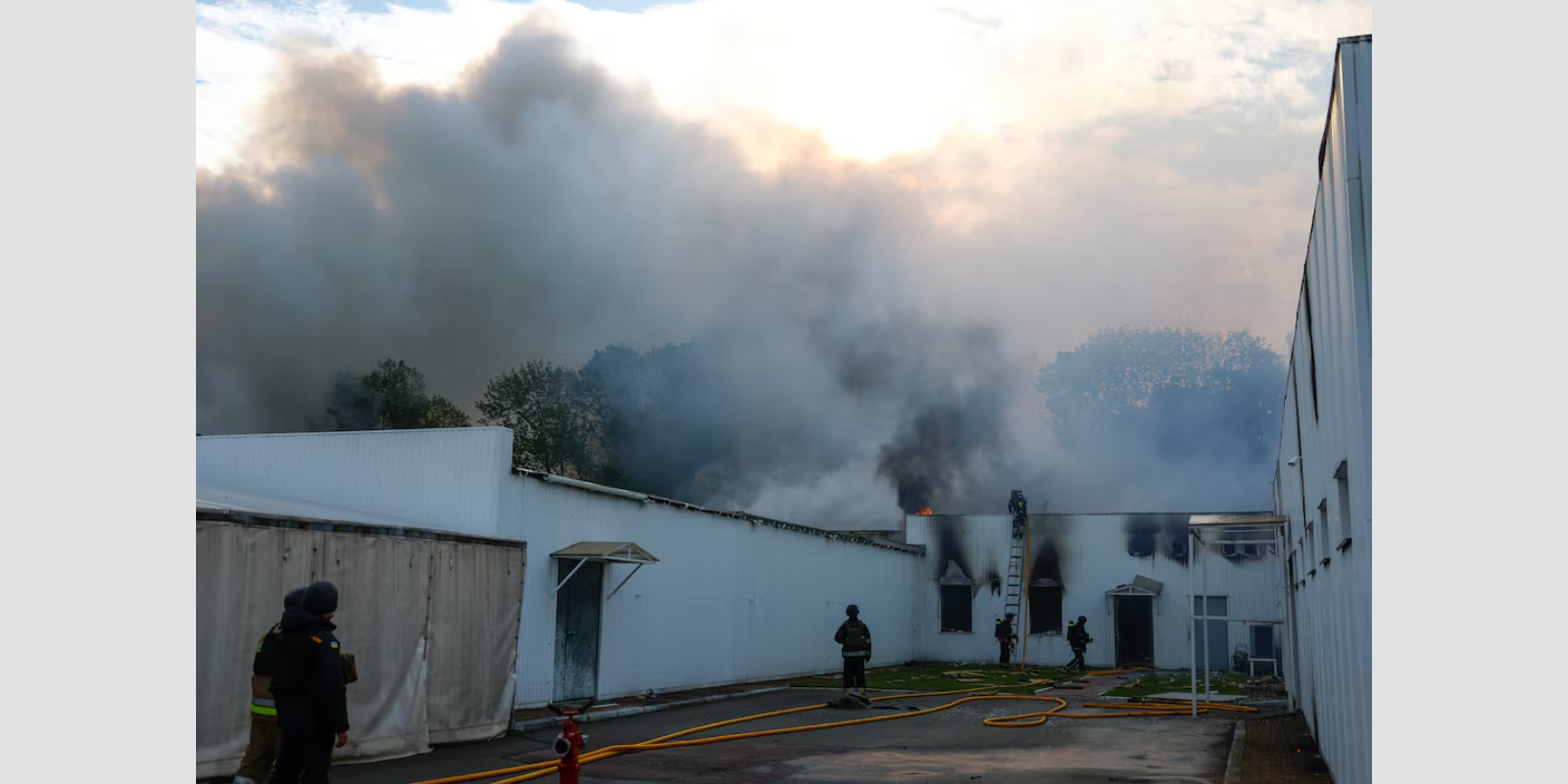The Gen Z revolution spreading in Asia
Nepal is just the most recent country to have seen the ruling elite toppled by frustrated young people
Andres Schipani in Kathmandu FT 15-09-2025
The streets of Kathmandu are marked by the signs of revolution. The stains of crusted blood on the pavement being washed away by the late monsoon rains; crushed china inside the ransacked residences of politicians; the stench of smoke from torched public buildings.
But it is an inscription with black marker on a marbled wall of the charred parliament building set on fire in Nepal’s capital last week that encapsulates the moment: “From now, only Gen Z youth will be in this place. Corrupt leaders will be sent out of the country. Long Live Nepal. Long Live Gen Z youth”.
The demonstrations in Nepal have been called the protest of “Gen Z” — which generally refers to people born between 1997 and 2012 — after young people, some in school uniforms, took to the streets against what they saw as an ageing and crooked political elite.
After two days of deadly and destructive protests, Prime Minister KP Sharma Oli resigned last Tuesday. The police said on Friday that the death toll from the turmoil had reached 51 nationwide, with almost 1,400 injured.
The initial rallies were sparked by a government ban on leading social media platforms but became a tipping point of long-standing sentiment against politicians and their families seen as corrupt.
“We were just there to revolt against corruption,” says Anjali Shah, a 24-year-old law student who saw some of her fellow protesters being shot at with live bullets by the police. “We felt that they can ban us online but we can still be on the streets demonstrating against the government, demanding to know where our taxes are going, how they are having these lifestyles with a public servant’s salary while we struggle.”
Nepal, where the median age is 25, below the Asian average of 32, embodies a growing regional trend where elder leaders of Oli’s generation clash with disenfranchised, ambitious and often unemployed young people who are fed up with politics as usual and a lack of opportunities.
It is just the latest domino to fall. Amid a dire economic crisis in Sri Lanka in 2022, tens of thousands of protesters, mainly youngsters, converged on Colombo, the commercial capital, and over-ran the presidential palace. Then president Gotabaya Rajapaksa, now aged 76, fled the country on a military aircraft for the Maldives. In Bangladesh two years later, students from Dhaka University led an enormous popular uprising that eventually forced the country’s authoritarian ruler, 77-year-old Sheikh Hasina, to flee to India.
Indonesia briefly looked like it might be next last month. Students took to the streets over news of members of parliament rewarding themselves with lavish housing allowances of $3,000 per month — 10 times the minimum wage in the capital Jakarta — at a time of broader economic weakness. President Prabowo Subianto, 73, was able to stem the unrest by scrapping parliamentary perks and firing his finance minister.
The common factors in all these insurrections are ageing and entrenched political classes in Asian developing economies where the younger generation sees the spoils of growth reverting back to elites and not improving their own lives. Youth unemployment in these countries is high, as are corruption levels. Although each set of protests is unique and specific, some experts see them as connected.
“Across the region the Gen Z are signalling to the political leaders that they want change. These young people also don’t have the same reverential attitude towards political leaders that perhaps the elder generation had,” says Shafqat Munir, senior fellow with the Bangladesh Institute of Peace and Security Studies in Dhaka. “Today’s Gen Z are very global in their outlook, they see what happened in other countries. The internet for them is not just a means of communication but literally their lifeblood that can ignite a firestorm.”
Nepal’s Marie-Antoinette “let them eat cake” moment came from social media itself.
Weeks before the ban, videos were circulating on Instagram and TikTok purporting to show the expensive cars, handbags and vacations enjoyed by politicians’ offspring, with hashtags such as #NepoKid and #NepoBabies.
The images of apparently extravagant lifestyles among the families of the powerful proved incendiary in a country that ranks 107th out of 180 countries in Transparency International’s annual corruption index and where the per capita income is $1,400 a year — lower than all of its South Asian neighbours, barring Afghanistan, according to World Bank data.
“Citizens don’t have salt. But you have to eat on gold and silver plates,” reads an Instagram post showing the offspring of some senior Nepali politicians drinking champagne.
Law student Shah says: “The starting point of this movement was a social media trend of exposing the ‘Nepo Kids’, politicians’ children having lavish lifestyles and showing that off on their own social media, while we are struggling with not having safe drinking water, no jobs, no opportunities in a country that has very high levels of corruption.”
Some of the protesters on the streets of the Himalayan nation wedged between India and China are too young to remember the last time Nepal was convulsed by protests that delivered radical change. The 2006 uprising paved the way for Nepal’s former autocratic king to end the country’s 239-year-old monarchy.
But despite promises of a new Nepal, the republican era failed to bring stability to a country scarred by 10 years of civil war. It has had more than a dozen governments in the years since and many of the same political actors have remained on the stage — including Oli, a four-time prime minister, building up the frustrations from the new generation that grew up seeing their hopes of reform crushed by an old guard.
“The state continued to be unresponsive to the ordinary citizens’ concerns, and the prime ministers, and the political elite, continued to behave like they were the new kings, thinking no one could challenge them,” says Amish Raj Mulmi, a Kathmandu-based political writer and author of All Roads Lead North: Nepal’s Turn to China. “This frustration, this rage, blew up this week, as it had in other countries where discontent among the youth was widespread, as in Bangladesh, Sri Lanka and recently Indonesia.”
In Bangladesh, the upheaval began with a protest against a job quota system in public service seen to favour the then-ruling Awami League party.
“But very quickly, it became clear that this was about something much larger,” says Nahid Islam, leader of Bangladesh’s National Citizen Party, which formed out of the student groups that led the “Monsoon Revolution” last year. “It was a rejection of a fascist political settlement, of entrenched corruption, and of an old style of politics that no longer served the people — only the regime’s loyalists and a ruling dynasty.”
There, as in Nepal, a heavy-handed response by authorities inflamed the situation. Police and security forces violently suppressed protests, shooting live ammunition into crowds and targeting students. Some 1,400 were killed, yet demonstrators continued to take to the streets despite the danger.
Similarly in Indonesia, protests escalated after a police vehicle ran over and killed a 21-year-old motorcycle ride-hailing driver near one of the demonstrations in central Jakarta while he was delivering.
“[His death] just poured oil to the fire as it symbolised how the rich and powerful are running over the weak and poor,” says Achmad Sukarsono, an associate director at consultancy Control Risks.
Much like in Nepal, he says, Indonesian lawmakers’ out-of-touch behaviour, corruption scandals involving government officials and the social media-driven culture that “glorifies showboating of elite status even when protests were already happening across the country just pushed public anger to boiling levels”.
At least 10 died in the demonstrations, which saw several regional parliament buildings set on fire. Angry mobs broke into and looted the homes of then finance minister, Sri Mulyani Indrawati, and several MPs.
“If parliamentarians are exercising their role as representatives of the people, they will be more sensitive to the real pains that people are suffering,” says Dewi Fortuna Anwar, a professor at the National Research and Innovation Agency of Indonesia, but they are “living in their own little bubble”.
Countries in south and south-east Asia typically have larger than average shares of young people, according to UN figures. In 2023, people aged 15 to 24 made up one-fifth of Nepal’s population, above the global average of 15.6 per cent, for example.
A young population should be an economic boon, bringing innovation, technological skills, new ideas and an energetic workforce. Yet in parts of Asia the supposed demographic dividend remains unseen. Not enough jobs are being created to absorb what could be a productive workforce.
According to estimates from Nepal’s department of foreign employment, some 700,000 Nepalis a year have left the country recently in search of a better future, mainly to rich countries in the Gulf, draining out a population of 29mn.
Remittances sent back by migrants working abroad have been “central” to Nepal’s economic growth, according to the World Bank, but have “not translated into quality jobs at home, reinforcing a cycle of lost opportunities and the continued departure of many Nepalis”.
According to the UN’s International Labour Organization, more than 80 per cent of the workforce in Bangladesh, Indonesia and Nepal is informally employed. Youth unemployment remains stubbornly high, with Sri Lanka’s jobless rate among people aged 15 to 24 being about 22 per cent last year, while Nepal’s stood at 21 per cent — higher than the global average.
“The discontent of the youth in parts of Asia is primarily due to the corrupt and authoritarian character of the regimes, but it also reflects socio-economic frustration,” says Christophe Jaffrelot, a South Asia expert with Sciences Po in Paris. “Inequalities are increasing everywhere, between the super-rich and impoverished middle-class young people affected by joblessness.”
But those youth have grown into a force to be reckoned with. In Bangladesh, they created the National Citizen party, which will participate in next year’s election and has pledged to draft a new democratic constitution for the country if elected.
In Sri Lanka, the youth vote was crucial to the surprise election last year of leftist outsider Anura Kumara Dissanayake to the presidency. The 56-year-old had promised to end corruption and remove privileges from the country’s elites.
The common links between the Gen Z is our age group and dissatisfactions. We got somehow influenced by our neighbours
In Nepal, representatives of the Gen Z groups managed on Friday to secure the appointment of a former chief justice, Sushila Karki, who is seen as untainted by corruption, to take over the reins of a caretaker government, in an attempt to fend off those trying to sequestrate their Himalayan revolution.
The streets are now calm in Kathmandu. While a maze of military checkpoints stand in between the shells of burnt-out cars and what’s left of government buildings smoulder, youngsters are “trying to rebuild our country right now”, says Sudan Gurung, one of the leaders of the ‘Gen Z’ movement.
Things have already started: at Karki’s behest, the president quickly dissolved parliament and called for a fresh general election, set for March.
“The common links between the Gen Z is our age group and dissatisfactions. We went out to protest against corruption and demanding accountability and transparency from politicians,” says Yatish Ojha, another Gen Z demonstrator. “We got somehow influenced by our neighbours in Sri Lanka and Bangladesh.”
The 25-year-old Ojha acknowledges that, in the capital, “we never thought we were going to overthrow the entire political regime within two days”.
Additional reporting by A Anantha Lakshmi in Jakarta














